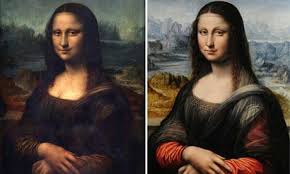
Introduction
The theft of the Mona Lisa from the Louvre in Paris on August 21, 1911, remains one of the most significant events in art history. This iconic painting, created by Leonardo da Vinci, is not only renowned for its exquisite artistry but also for the drama surrounding its theft. The incident not only captivated the public’s imagination but also impacted the world of art and cultural heritage, exemplifying how art can transcend its medium to become a symbol of national pride and identity.
The Heist: How It Happened
The theft was executed by Vincenzo Peruggia, an Italian handyman who had previously worked at the Louvre. Peruggia believed that the Mona Lisa should be returned to Italy, arguing that it had been stolen by Napoleon during his conquest. On the day of the heist, he hid overnight in the museum and, disguised as a worker, walked out with the painting hidden under his coat the next morning. Peruggia’s meticulous planning allowed him to escape detection.
The Investigation
The disappearance of the Mona Lisa was not immediately noticed, as it was a Sunday, and the museum was closed. Once discovered, the art world was thrown into chaos. The authorities launched an extensive investigation, leading to widespread media coverage and public interest. The case gained international attention, solidifying the Mona Lisa’s place in popular culture as more than just a painting but a treasure to be protected.
The Recovery
For over two years, the Mona Lisa remained missing, with numerous false leads and speculations surrounding its whereabouts. In 1913, Peruggia contacted an art dealer in Florence, attempting to sell the painting. The dealer, suspicious of the provenance, contacted the police, which led to Peruggia’s arrest. On December 30, 1913, the Mona Lisa was returned to the Louvre, where it has remained on public display since.
Significance and Legacy
The theft of the Mona Lisa not only underscored the vulnerabilities of art institutions but also changed public perception of the painting itself. The story of its theft contributed to the Mona Lisa’s fame and mystique, making it one of the most recognized artworks globally. Today, it continues to draw millions of visitors to the Louvre annually, showcasing the enduring power of art as a cultural icon.
Conclusion
The daring heist of the Mona Lisa serves as a reminder of the intersection between art and history. It highlights the lengths individuals will go to claim cultural heritage while demonstrating the profound connection society has with art. As discussions regarding art theft and cultural repatriation continue, the story of the Mona Lisa stolen only enriches the dialogue surrounding the significance of artwork and the responsibility of preserving it for future generations.



